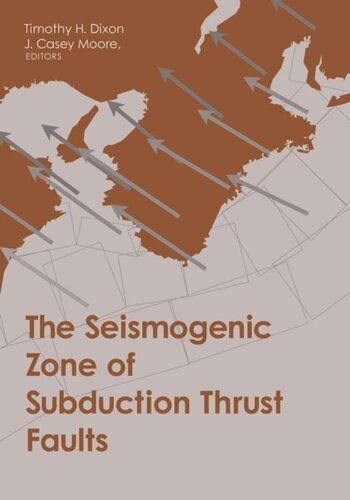

Most ebook files are in PDF format, so you can easily read them using various software such as Foxit Reader or directly on the Google Chrome browser.
Some ebook files are released by publishers in other formats such as .awz, .mobi, .epub, .fb2, etc. You may need to install specific software to read these formats on mobile/PC, such as Calibre.
Please read the tutorial at this link: https://ebookbell.com/faq
We offer FREE conversion to the popular formats you request; however, this may take some time. Therefore, right after payment, please email us, and we will try to provide the service as quickly as possible.
For some exceptional file formats or broken links (if any), please refrain from opening any disputes. Instead, email us first, and we will try to assist within a maximum of 6 hours.
EbookBell Team

4.8
64 reviewsSubduction zones, one of the three types of plate boundaries, return Earth's surface to its deep interior. Because subduction zones are gently inclined at shallow depths and depress Earth's temperature gradient, they have the largest seismogenic area of any plate boundary. Consequently, subduction zones generate Earth's largest earthquakes and most destructive tsunamis. As tragically demonstrated by the Sumatra earthquake and tsunami of December 2004, these events often impact densely populated coastal areas and cause large numbers of fatalities.
While scientists have a general understanding of the seismogenic zone, many critical details remain obscure. This volume attempts to answer such fundamental concerns as why some interplate subduction earthquakes are relatively modest in rupture length (greater than 100 km) while others, such as the great (M greater than 9) 1960 Chile, 1964 Alaska, and 2004 Sumatra events, rupture along 1000 km or more. Contributors also address why certain subduction zones are fully locked, accumulating elastic strain at essentially the full plate convergence rate, while others appear to be only partially coupled or even freely slipping; whether these locking patterns persist through the seismic cycle; and what is the role of sediments and fluids on the incoming plate.
Nineteen papers written by experts in a variety of fields review the most current lab, field, and theoretical research on the origins and mechanics of subduction zone earthquakes and suggest further areas of exploration. They consider the composition of incoming plates, laboratory studies concerning sediment evolution during subduction and fault frictional properties, seismic and geodetic studies, and regional scale deformation. The forces behind subduction zone earthquakes are of increasing environmental and societal importance.